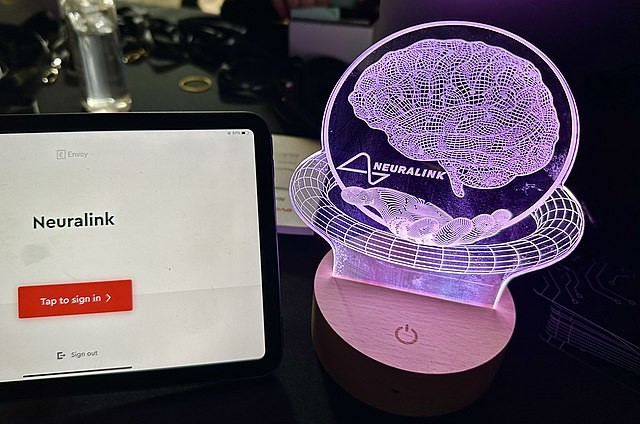
(Photo: Wikimedia Commons/Steve Jurvetson )
Neuralink started testing its human brain implant earlier this year. However, there was reportedly a problem, but it didn't pose a direct risk to the patient's safety.
Neuralink's Brain Implant Encounters a Problem
In January, Noland Arbaugh, 29, underwent a brain implant. Neuralink implanted its brain-computer interface (BCI) in his brain to help him address his paralysis by controlling external technology using his mind. It uses the company's Link system, which records the neural signals using 1,024 electrodes across 64 "threads," thinner than a human hair.
However, in a new blog post published on Wednesday, Neuralink announced that it encountered a problem that inhibited the company's ability to measure Link's speed and accuracy.
Neuralink did not disclose the number of threads it withdrew from the tissue and did not immediately respond to CNBC's request for comment.
As a remedy, Neuralink said in the blog post that it improved methods for converting signals into cursor movements, changed the recording algorithm, and improved the user interface. Neuralink posted its blog post after a report questioned the business about the issue. Neuralink considered removing the implant, but the problem hasn't directly endangered Arbaugh's safety.
Neuralink stated that Arbaugh uses the company's BCI system for about eight hours a day during the week and frequently up to ten hours on the weekends, even though some threads had retracted from his brain tissue.
Other companies develop BCI systems than Neuralink, and the subject has been studied in academic settings for many years.
Neuralink must undergo extensive safety and efficacy testing before it can be considered for U.S. approval. The FDA will handle the technology's commercialization.
@twitter|https://twitter.com/ModdedQuad/status/1771298116719002100?ref_src=twsrc%5Etfw@
ALSO READ: FDA Approves Elon Musk's Human Clinical Study for Neuralink
What Did the Patient Say About Neuralink?
Arbaugh, the PRIME study participant, is satisfied with his progress following the brain implantation. According to him, he could lie in his bed and use Link. Another assistive technology requires someone else to help him or have him sit up because sitting stresses him mentally and gives his body sores and spasms. For him, the technology has helped him live on his own time without needing anyone to adjust him throughout the day.
It also reportedly helped him reconnect with the world, his family, and his friends. It enables him to do things independently without needing a family member at all hours of the day and night.
On Weekdays, he contributes to the research for up to eight hours daily. However, on weekends, his personal use and recreation using Link can exceed 10 hours.
He recently used the device for 69 hours in a single week—35 hours of structured sessions and 34 hours for his personal use.
He thought the mouth stick was better than BCI, but the latter was as good, if not better, and it was still improving. The game he plays at present can reportedly leap and bound better than the previous ones.
"I'm beating my friends in games that as a quadriplegic I should not be beating them in," he added.
RELATED ARTICLE: Elon Musk's Next Neuralink Project Is 'Blindsight'; Implant for Blind People Already Working in Monkeys
Check out more news and information on Neuralink in Science Times.











![Mars Faces Three Times More Potentially Hazardous Asteroids Than Earth [Study]](https://1721181113.rsc.cdn77.org/data/thumbs/full/53711/258/146/50/40/mars-faces-three-times-more-potentially-hazardous-asteroids-than-earth-study.jpeg)


